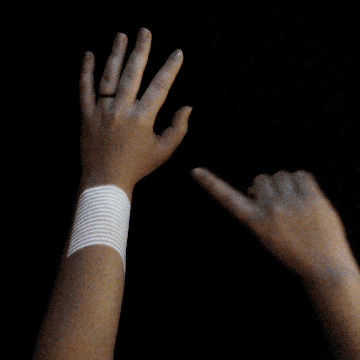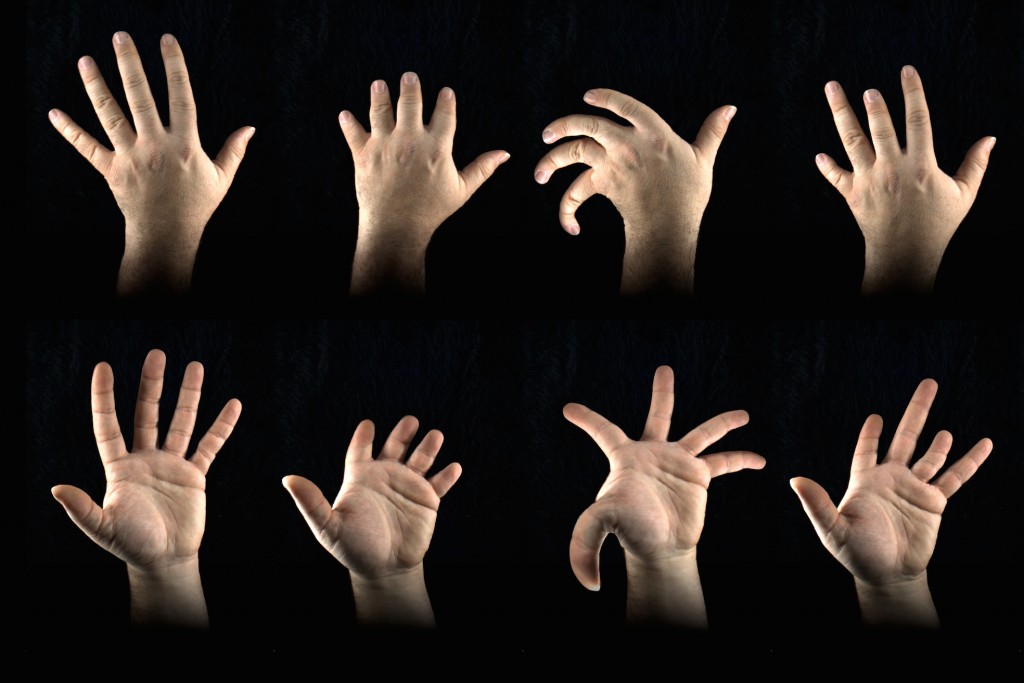
by Golan Levin, Chris Sugrue, and Kyle McDonald
2014
Chris Sugrue is an artist and programmer who devotes herself into making interactive installation, performances and experimental interfaces. She holds a Masters degree from Parsons School of Design, and worked as a creative engineer at the Ars Eletronica Futurelab. Her work received first prize from Share Festival, and were honored with Design of the Year award for interactive category.
Her project “Augmented Hand Series” provides an engaging, real-time, playful and dreamlike experience. The project uses motion sensors to detect visitor’s hand, and displays a reimagined hand that might have extra fingers or shorter fingers. Chris collaborated with two other artists Golan Levin and Kyle McDonald. The project is amazing because it brings the impossible to seem so real while giving the visitors total freedom to “transform” their hand among a bunch of choices.
Category: LookingOutwards-10
Shannon Case – Looking Outwards Week 10
This week I would like to discuss a project by Stacey Mulcahy. She has taught at both in academic programs such as the Interactive Multimedia Program at Algonquin College and the BIT program at Carleton, as well as taught workshops in the industry. She is interested in coding and physical computing.
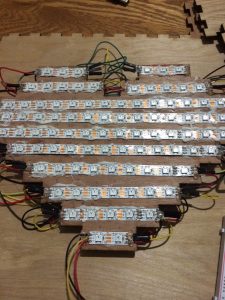
In a 2014 project called “TweetHeart“, she created a big light up heart that was connected to her Twitter account. She wanted to create something that made a more physical representation of the “love” she was feeling when she got likes and shares on her posts. I like this project because it was really inspiring for me to see her working with all the different elements of the project herself. She did everything from learning how to use a laser cutter to build the box to putting together the lights to coding the actual program. I found this really inspiring to see her doing all the work by herself.
Here is a video of the project in action
jihoonp_lookingoutwards_10
Yael Braha is a creative director from Rome, Italy, currently working for a design firm called Moment factory. She is involved in a wide range of artworks whether they involve computation or not, and her work is displayed world wide.Her works include big scale installations, film art, sculptures, paintings, graphics. Braha has been exploring the extent of art as means of communication and interaction, especially with the aid of computation.
This project installed in California Academy of Sciences in San Francisco is called “Animal Race.” It is an interactive installation that gets users to take a short race with an animal of their choice. The way it works is once the user chooses which animal to race, it will automatically compare it with the speed of the user and represent the result in graphics. It also shows a representation of compiled result of the races conducted for each animal.
This is a nice project for the museum that can bring people to get involved in learning experience, whereas traditional museum was focused on passive viewer stance. It presents a possible way for interactive learning that other museums can adopt.


Looking Outwards 10- Simin Li

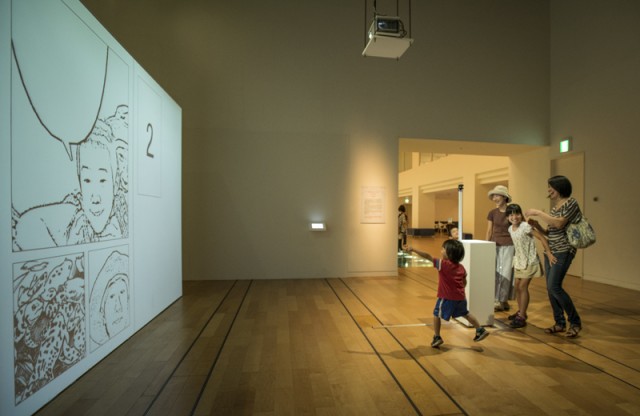
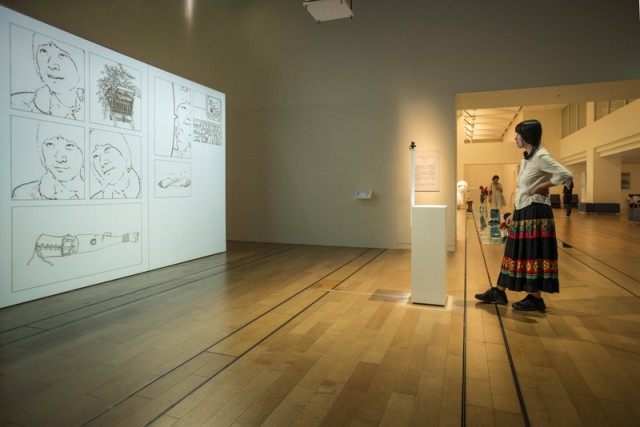

Nova Jiang is a Chinese artist that builds interactive installations based in Los Angeles. She has a degree in Media Arts from UCLA and has been doing work that makes the audience relate with her artwork in one way or another.

The project Ideogenetic Machine that started in 2001 and is still ongoing generates a 4 page graphic novel in real time based on the photos taken of viewers and previously drawn news events. The artist uses a camera to capture visitors who are eager to pose and use their creativity to make a graphic novel that features them as the protagonist. Then, she uses customized software to make those photos into a line drawing and integrate them into the partially finished story randomly. Finally, the visitor can add dialogue into the text boxes left blank based on their own interpretation. Jiang adds to the database of drawings continuously, converting her views of current events into drawings that are then used to make each customized graphic novel.
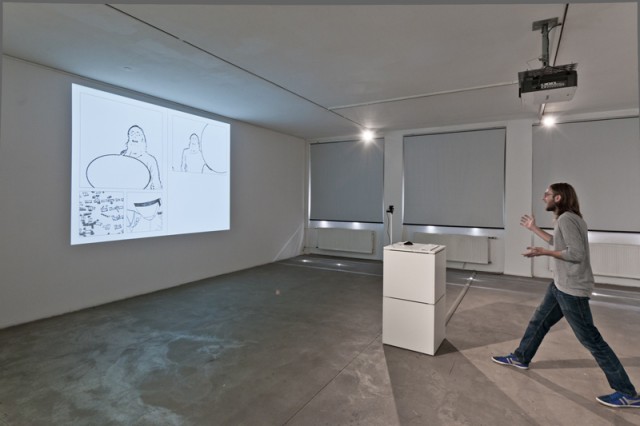
What is interesting to me about this project is the importance of the viewer in making the comic. The amount of interactivity surpasses many other interactive installations. Another interesting thing is that the project is always up to date. I admire Jiang for her perseverance in adding drawings of current events into the system and making it a story that matters.
Links
Ideogenetic Machine on Vimeo
Ideogenetic Machine on Youtube
Looking Outwards 10: Delicate Boundaries
I looked at the work of Chris Sugrue, who is an artist and programmer focused on developing interactive installations, audio-visual performances, and experimental interfaces. A graduate of Parsons School of Design, her work plays with technology through investigating topics such as artificial life, eye-tracking and optical illusions.
I was intrigued by Sugrue’s project, “Delicate Boundaries,” which is an interactive installation that serves as a representation of how our “digital world” (i.e. smartphones, tablets, and laptops) creeps into our physical world (our bodies). Sugrue created small bugs made of light that crawl onto users’ bodies when they interact with the installation, leading to an interesting effect in which people attempt to swat away bugs that only exist virtually. This might also be interpreted as people trying to separate their physical world from their digital one.
For “Delicate Boundaries,” Segrue received an honorary mention from Vida Art and Artificial Life Awards and first prize from Share Festival.
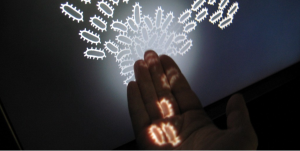
Delicate Boundaries from csugrue on Vimeo.
Isabella Hong – Looking Outwards 10
For this week’s post, I decided to focus on designer, educator, and creator Rachel Wingfield. Wingfield attended the Royal College of Art and studied responsive environments that are inspired by living systems. Her concentration in school is still evident in the work she has produced throughout her professional career.
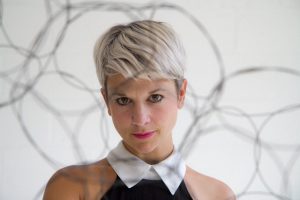
In 2003, Wingfield founded Loop.ph, a crafting space and laboratory that focuses on incorporating living materials and technology into public environments. As the founder of Loop.ph and as a designer, researcher and educator, Wingfield encourages designers and the public to intervene on an urban scale, to turn living materials into visual experiences and environments.
A project that incorporated these fundamentals was Brainwaves: Faster than Sound. The project was done in collaboration with Loop.ph, the contributing artists being Wingfield, Mathias Gmachl, Professor Vincent Walsh, Mira Calix, Anna Meredith, and The Aurora Orchestra, Joana Seguro – Lumin. The installation was constructed of dead trees that were arranged into a highly intricate grid of electro-luminous strings that worked in tandem with the positions of the musicians in the space. While the musicians performed, MRI images and slices of Malthius’ skull would be projected, demonstrating the intricacies of neural functions in action.
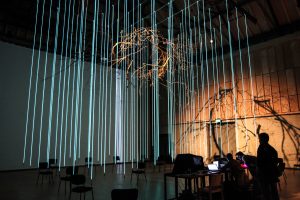
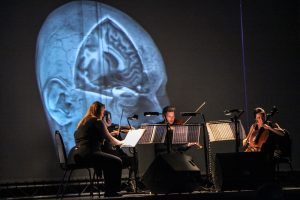
I particularly admired this project for it’s unique output – the final installation incorporated biology, music, and technology to create this immersive and very futuristic experience. I think that what Wingfield is doing as an artist is constructing a bridge between science, technology, and the arts even further.
ShanWang-LookingOutwards-10
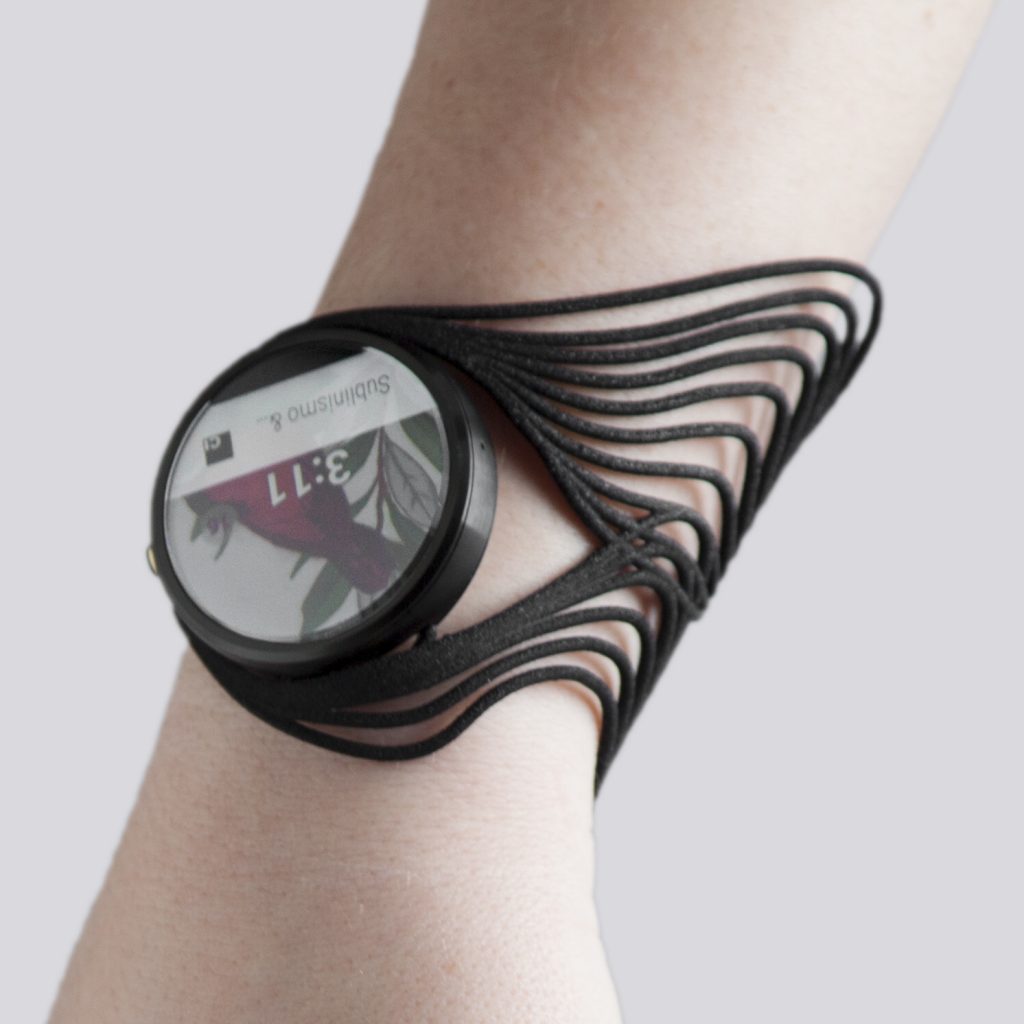
example 3D printed watch band for Moto 360 Smartwatch
Tactum: the user interacting with the projection
I found the Tactum project created by MADLAB.CC to be extremely inspiring. Madeline Gannon is the head of the MADLAB.CC, which is a research studio specializing in integrating design and computational tools to develop interfaces for crafting wearables on and around the human body.
Madeline has background in architecture and computation design, and is currently PhD candidate at Carnegie Mellon University.
Tactum project specifically dealt with the manipulation of interactive digital geometry on user’s skin. The gestures used within Tactum are designed to be natural and intuitive for users. By poking, pinching or rubbing users can customize their own wearable within the embedded 3D printing fabrication constraints in the programmed geometry. The project was implemented with the combination of CAD backend for projection, existing 3D SCAN and 3D printer.
I’m particularly intrigued by the potential extended usage for this technology, and hope for the improvement on the precision.
Kyle Lee Looking Outward 10: Adrien Segal
P9 Artist Profile: Adrien Segal
I chose Adrien Segan, a data sculptor and product design visualizer. As a product design major, I initially was drawn to her pieces, all of which showcase some tremendous craft and form. After reading more material on her vision, it became clear that her projects identity’s were about the embodiment of data regarding the natural world. She takes a tangible emotional approach to visualizing statistical information while:
“Scientific conventions are founded on the belief that we must systematically eliminate emotional involvement in order to uncover truths about the natural world. As a result, I feel a deep disconnect from nature and a great loss of intuitive knowledge.”
Her work is the bridge between compelling data, and powerful emotion that together inspire great vision. Her Trends in Water Use project is one example in which she uses USGS data as dimensions of a cavernous canyon, creating a representation of the absence of water, the gravity of the situation, and the passing of time.
One critique I did have, particularly with this project, was the fact that at first glance, it looks like a piece of decorative furniture. I didn’t understand the piece until I read the description on the website and watched an accompanying video. Although I am now intrigued with the project’s meaning, I am unsure how it will be interpreted by people viewing it for the first time without context.
Diana Connolly – Looking Outwards 10

Filtered Transparencies (2015), by Filipa Valente
Filtered Transparencies is an interactive art piece that “uses layered light, space and sound to create an immersive experience.” The artist uses her background in architecture to help create interactive light pieces in which the viewer gets a sense of volume, and an almost “hologram-like” environment. Please see the video below for a better understanding of how this is done:
Filtered Transparencies – LISBON 2015 from Filipa Valente on Vimeo.
I find this very inspirational because the artist is able to use light, usually a thing only sensed by our vision, to be sensed through physicality and volume. I find it interesting that Valente studied architecture for undergraduate and masters (at the Bartlett School of Architecture in London), and I like how this background influenced her interactive art. She is now based in Los Angeles, working as an architect/interactive artist. Her current area of interest involves how an individual interacts with the space around them, in terms of interactive and media art. I am unsure of the original software used to create Filtered Transparencies, but I am sure that some computing/software was used to program the interactive lights.
For more information on the project, the article cited above is here: http://cargocollective.com/limilab/Filtered-Transparencies-2-0-LISBON-2015
![[OLD – FALL 2016] 15-104 • COMPUTING for CREATIVE PRACTICE](https://courses.ideate.cmu.edu/15-104/f2016/wp-content/uploads/2020/08/stop-banner.png)
